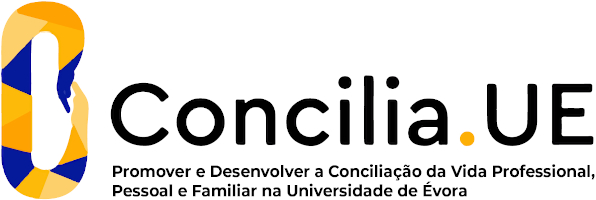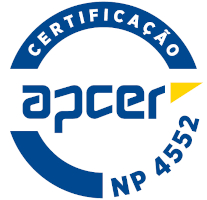2024
Structural Mechanics
Name: Structural Mechanics
Code: EME00526L
6 ECTS
Duration: 15 weeks/156 hours
Scientific Area:
Mechanical Engineering
Teaching languages: Portuguese
Languages of tutoring support: Portuguese, English
Regime de Frequência: Presencial
Sustainable Development Goals
Learning Goals
Consolidate and deepen the knowledge in Mechanics fundamental to the analysis and design of structural members and structures.
Capabilities to be developed:
(a) identify the multiple stress and strain states to which a structural member may be submitted, and understand which are the most relevant components;
(b) understand the underlying approximations introduced in developing the governing equations for structural members and the corresponding theory limitations;
(c) evaluate the behaviour of a shaft or beam type structural member in torsion, bending and axial deformation, by computing the corresponding internal forces and displacements;
(d) compute the internal forces and displacements in statically indeterminate frames;
(e) analyse the mechanical response of plates and shells in simple situations;
(f) use symbolic computation tools and basic softwares in the analysis of structures;
(g) gain independence in studying a topic from multiple sources.
Capabilities to be developed:
(a) identify the multiple stress and strain states to which a structural member may be submitted, and understand which are the most relevant components;
(b) understand the underlying approximations introduced in developing the governing equations for structural members and the corresponding theory limitations;
(c) evaluate the behaviour of a shaft or beam type structural member in torsion, bending and axial deformation, by computing the corresponding internal forces and displacements;
(d) compute the internal forces and displacements in statically indeterminate frames;
(e) analyse the mechanical response of plates and shells in simple situations;
(f) use symbolic computation tools and basic softwares in the analysis of structures;
(g) gain independence in studying a topic from multiple sources.
Contents
1. The concepts of stress and strain, strain measurements, constitutive laws, anisotropic case with thermal effects, equations of motion and equations of compatibility. Yield and failure criteria.
2. Torsion of straight members with arbitrary cross section, and thin walled open, closed and multicelular cross sections.
3. Curved beam theory for members with arbitrary cross section in nonsymmetrical bending. Shear stress arising from the shear forces, bending and torsion coupling and shear centre.
4. Introduction to the analysis of plates. Kinematical hypothesis and corresponding governing equations. Solution methods for rectangular plates and circular plates with axisymmetrical loading. Brief introduction to laminates and the analysis of axisymmetrical shells.
5. Energy theorems useful for structural analysis and corresponding applications. Approximations using the Rayleigh-Ritz method.
6. Introduction to matrix structural analysis and the Finite element method.
2. Torsion of straight members with arbitrary cross section, and thin walled open, closed and multicelular cross sections.
3. Curved beam theory for members with arbitrary cross section in nonsymmetrical bending. Shear stress arising from the shear forces, bending and torsion coupling and shear centre.
4. Introduction to the analysis of plates. Kinematical hypothesis and corresponding governing equations. Solution methods for rectangular plates and circular plates with axisymmetrical loading. Brief introduction to laminates and the analysis of axisymmetrical shells.
5. Energy theorems useful for structural analysis and corresponding applications. Approximations using the Rayleigh-Ritz method.
6. Introduction to matrix structural analysis and the Finite element method.
Teaching Methods
Teaching consists of two hour weekly lectures where the course contents are presented and explained with derivations, with examples, and two hour recitations (theoretical-practical classes) where problems are solved using the learned contents. Two classes will involve experiments. Two hour tutoring per instructor is weekly available outside classes.
The students assessment consists of two written tests [T_i] made along the semester or a final exam [E_j] (two dates available, the date for T2 is coincident with E1), and three computational assignments [A_k], at least one of these with an experimental part. All elements are marked in the range [0, 20]. There is a minimum mark of 9.0 for any T_i ou E_j.
The final grade [NF] is given by:
N = 0.6 * maximum((T1+T2)/2 , E1, E2) + 0.4 * (A1+A2+A3)/3;
if (T1 and T2 and T3 or E1 or E2)>= 9.0 then NF = N
else NF = minimum(N, 9.0);
For E2 and extra dates there is the option to NF = E_i for i> 1.
The student is approved if NF>= 9.5.
The students assessment consists of two written tests [T_i] made along the semester or a final exam [E_j] (two dates available, the date for T2 is coincident with E1), and three computational assignments [A_k], at least one of these with an experimental part. All elements are marked in the range [0, 20]. There is a minimum mark of 9.0 for any T_i ou E_j.
The final grade [NF] is given by:
N = 0.6 * maximum((T1+T2)/2 , E1, E2) + 0.4 * (A1+A2+A3)/3;
if (T1 and T2 and T3 or E1 or E2)>= 9.0 then NF = N
else NF = minimum(N, 9.0);
For E2 and extra dates there is the option to NF = E_i for i> 1.
The student is approved if NF>= 9.5.
Teaching Staff
- António Rui de Oliveira Santos Silva Melro [responsible]





















